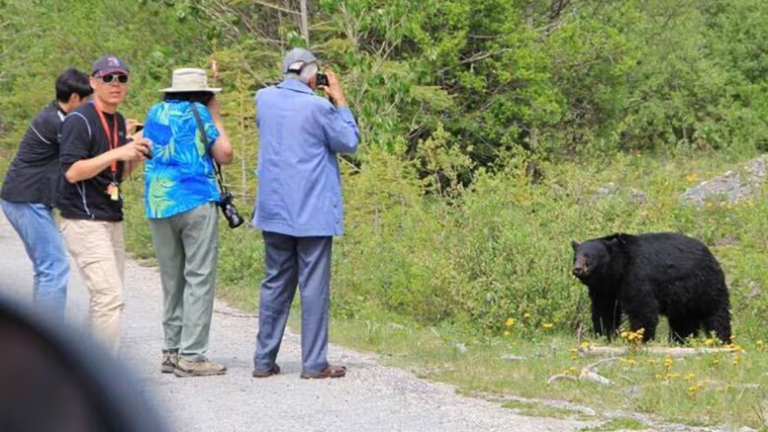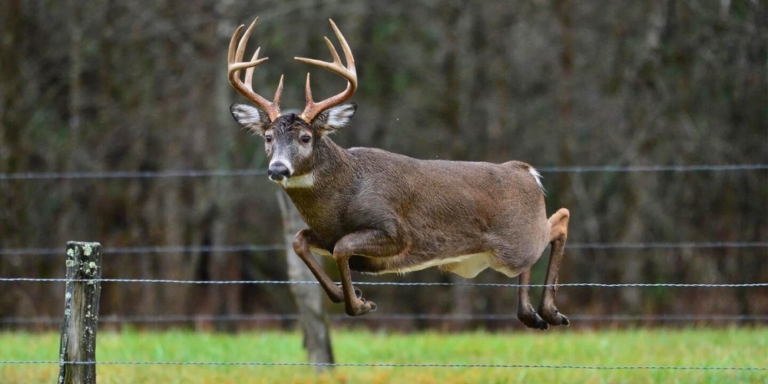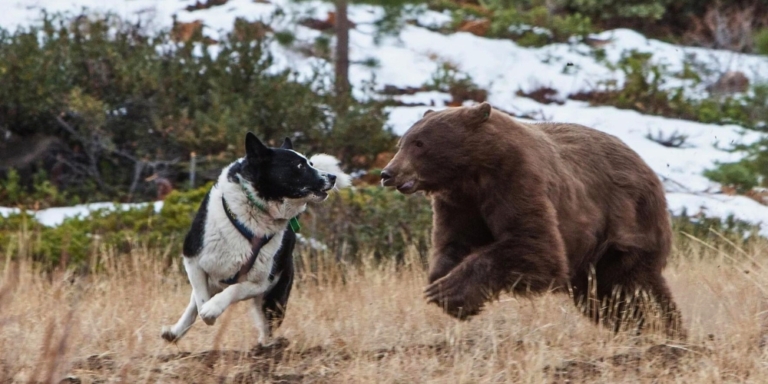You might have heard of “Wheat Belly.”
Wheat belly represents the fat accumulation around our bellies resulting from years of consuming foods that trigger increased insulin production, the fat storage hormone.
Bread, bagels, and donuts—anything made with flour and sugar—are common foods blamed for wheat belly.
But where most humans want to reduce the size of their bellies, bears actively search out goodies that will help them gain weight, and Banff bears have found a great source: grain spilt from freight trains!
No Stopping Unless You’re a Bear
A 320-metre stretch of highway on the Bow Valley Parkway between Baker Creek and Protection Mountain Campground has been designated a “no-stopping zone” due to spilled grain.
Parks Canada implemented the zone to protect two famous bears who have been eating grain in the area since April 2.
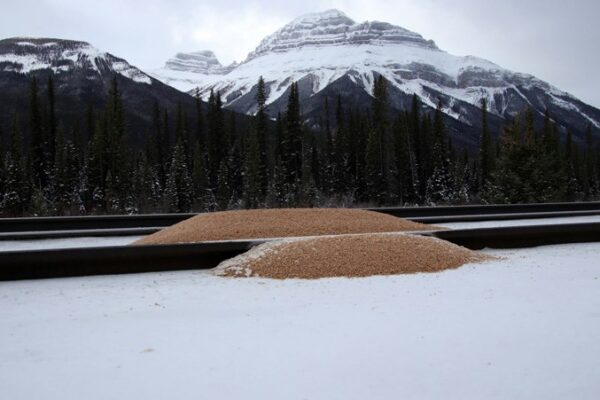
The famous bears are none other than Split Lip and The Boss.
Food is the top priority for bears coming out of hibernation.
Imagine waking up starved, with a cereal buffet laid out along an easy-to-walk pathway. That’s what these two big male bears have found along the railroad track!
While the two bears are eternal rivals, both can agree that spilled grains are easy pickings.
Grain spilling from freight trains is not uncommon.
A Parks Canada study found that trains on the Canadian Pacific Railway (CPR) line in Banff and Yoho national parks spill 110 metric tons of grain annually.
That’s enough grain to feed 50 adult grizzly bears for the year. Some grain spills are worse than others.
In 2019, a CPR freight train derailed in Banff National Park. Ten of the train’s 20 railcars that derailed contained grain.
“The grain will need to be removed thoroughly and in a timely manner, as we can anticipate grizzly bears to be emerging in the next 2-4 weeks, and they will be attracted to the spilled canola,” said Parks Canada.
Cleaning up spilled grain is a challenging feat. Parks Canada spokesperson James Eastham says grain is too dispersed to clean effectively.
Fame Doesn’t Come Free
Spilled grain is great news for hungry bears, but it risks public safety. The no-stopping zone on the Bow Valley Parkway is next to a railway track.
Bears can quickly leave railroad tracks and move downhill towards the highway to avoid oncoming trains, but between 20 and 25 grizzly bears have been killed on the tracks since 2000.
Unlike the Trans Canada Highway, the Bow Valley Parkway does not have wildlife fences.
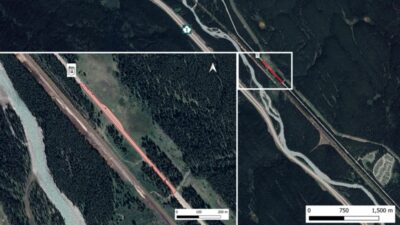
The sudden appearance of a bear on the side of the highway might cause drivers to suddenly slow down or stop their cars to take photos.
“The area also lacks a road shoulder to pull over onto, and traffic flow is impeded by parked vehicles,” said Eastham.
Stopping on the highway can lead to ‘bear jams’ and potential accidents. There isn’t enough space to ensure a safe viewing distance of 100 metres between people and bears.
Grizzly bears can run up to 35 miles per hour, which means it would take a grizzly about six seconds to cover 100 metres.
Six seconds is enough time for a harmless wildlife photoshoot to turn into a deadly grizzly encounter for people outside their vehicles.
Unfortunately, the popularity of Split Lip and The Boss has added fuel to the fire.
Photos and videos of the famous bears are spreading like wildfire on social media, attracting visitors to the area who want to see the living legends for themselves.
Mix in two rival bears, a traffic jam, and photographers spread out on the road and in the ditch, and you have a recipe for disaster.
A $25,000 Photo
For the most intelligent beings on the planet, humans do some pretty stupid stuff, and stopping at the Bow Valley Parkway isn’t the worst of it.
Charlie McLellan, acting wildlife ecologist in Lake Louise, Yoho, and Kootenay national parks, has heard reports of dozens of vehicles pulled over simultaneously, some stopped right in the middle of the road.
Some of these people didn’t just get out of their cars; they also went on the railway tracks searching for wildlife!

Bears near humans also risk habituation, where an animal loses its natural fear of humans.
In the ten days before the no-stop zone, Parks Canada responded to several reports of bear jams, unsafe parking, and people leaving their cars to approach the feeding bears.
Yikes!
Thankfully, McLellan claims there have been no violations of the no-stopping zone since it was initiated.
The hefty penalties might have something to do with it.
Anyone who violates the no-stopping zone can immediately expect a $115 ticket.
In addition to a ticket, violators could face a $25,000 fine and a mandatory court appearance.
Snapping a photo of Split Lip and The Boss is not worth $25,000, let alone your life. While the no-stopping zone is temporary, responsibly viewing wildlife should be practiced year-round.
There is plenty of wildlife in Alberta. Wouldn’t you rather enjoy these animals in their natural habitat than between a highway and a railroad track?
If you are involved in a bear jam in the national parks, the video below offers us some ‘food for thought.’


